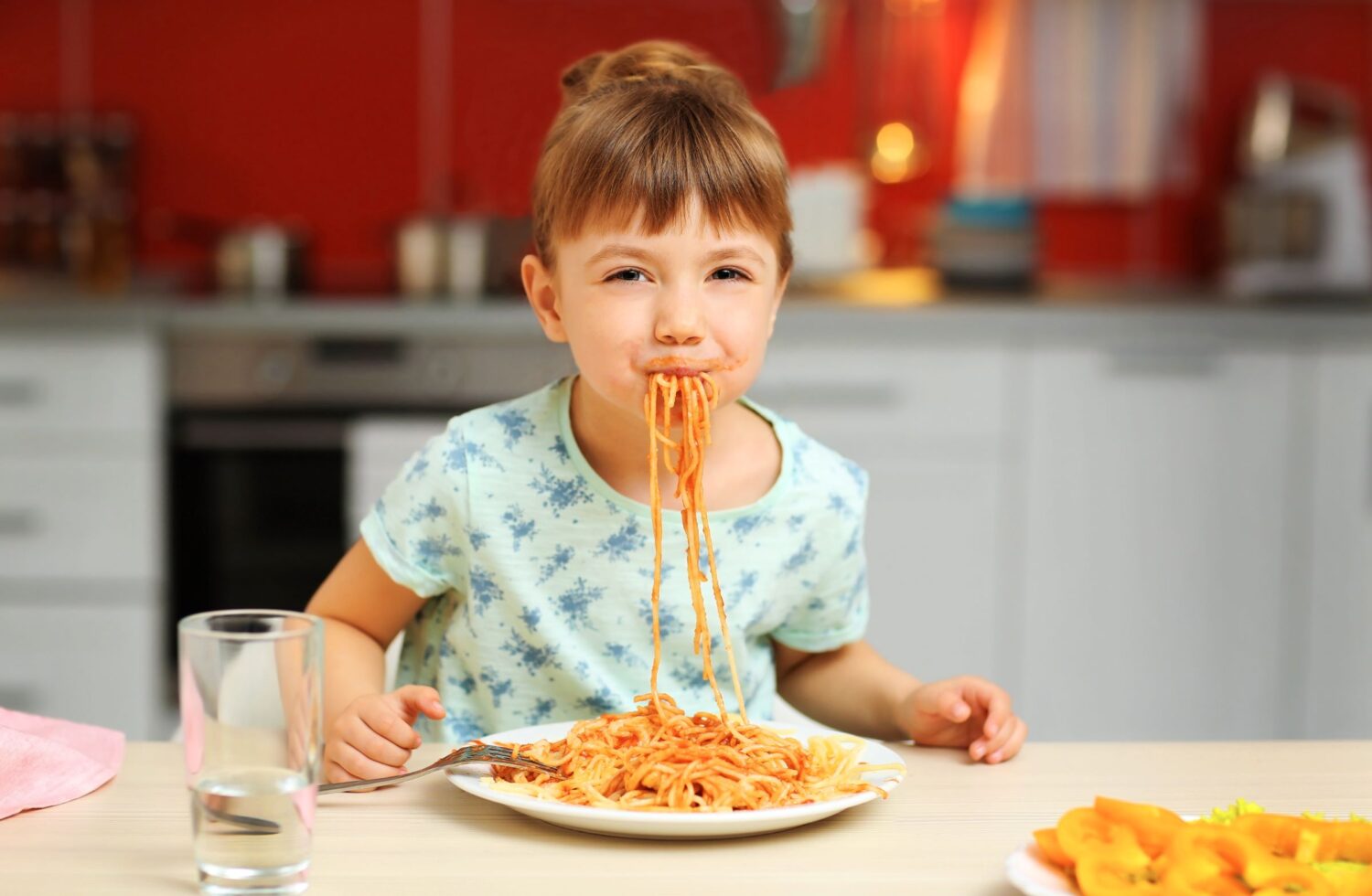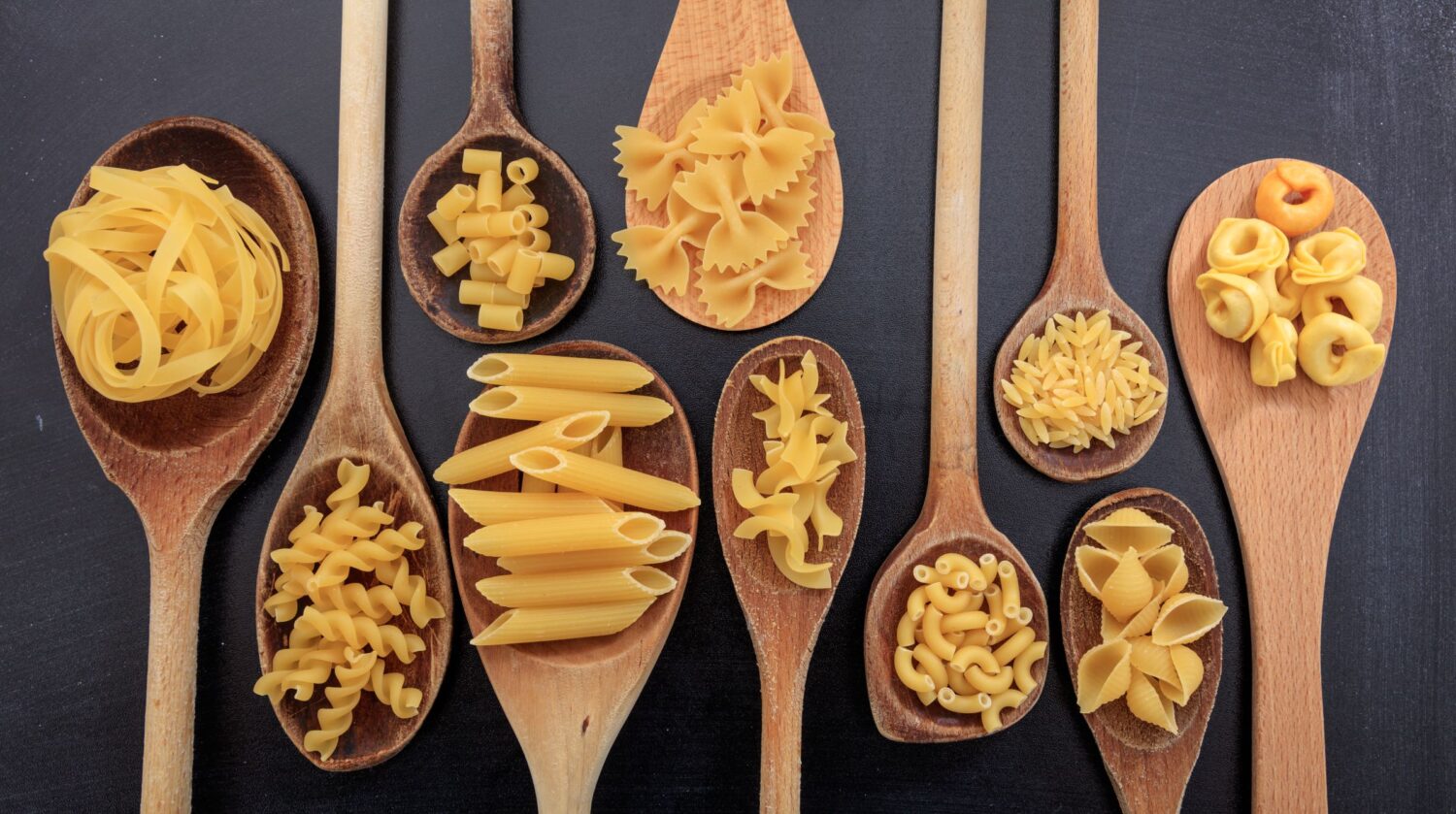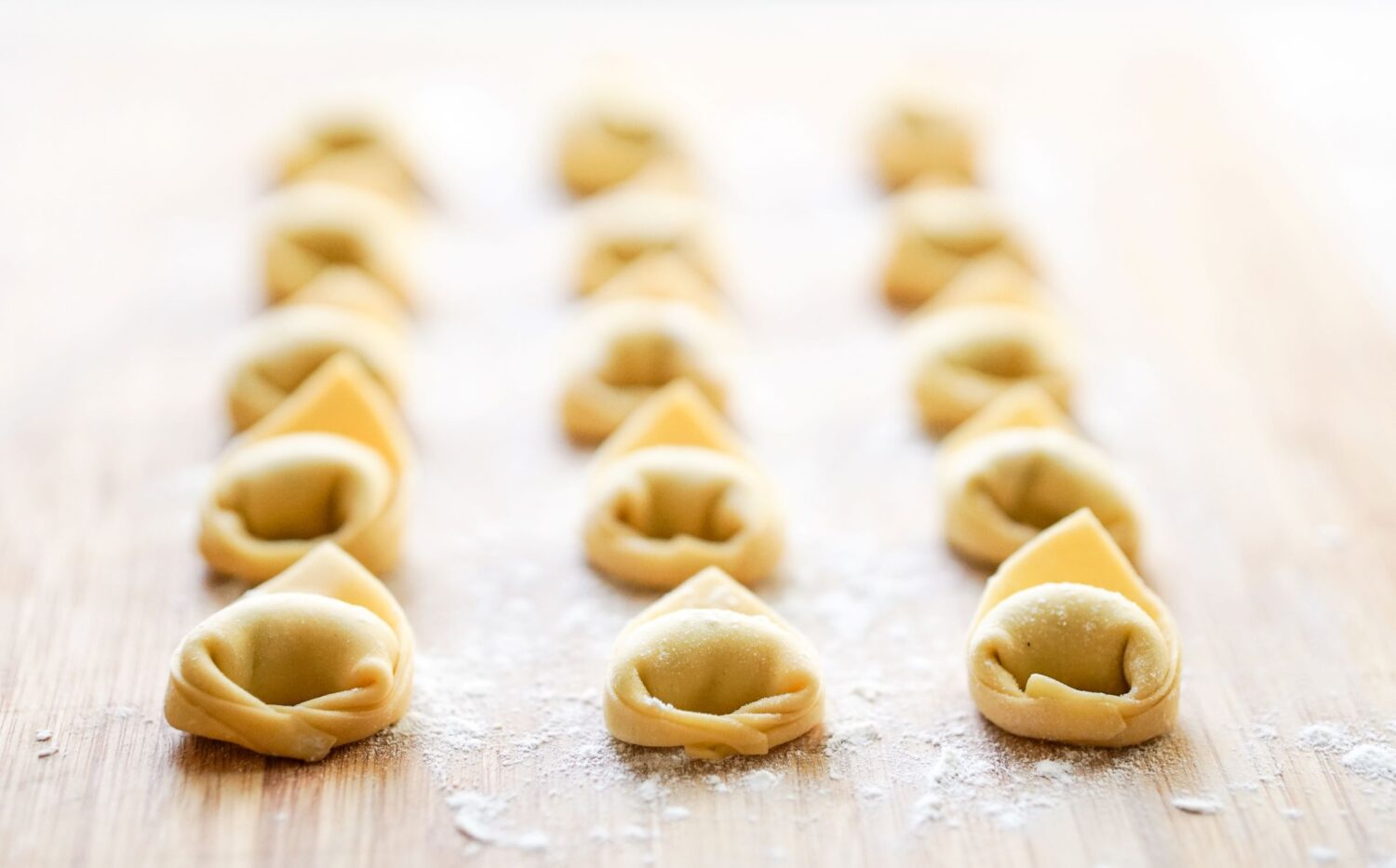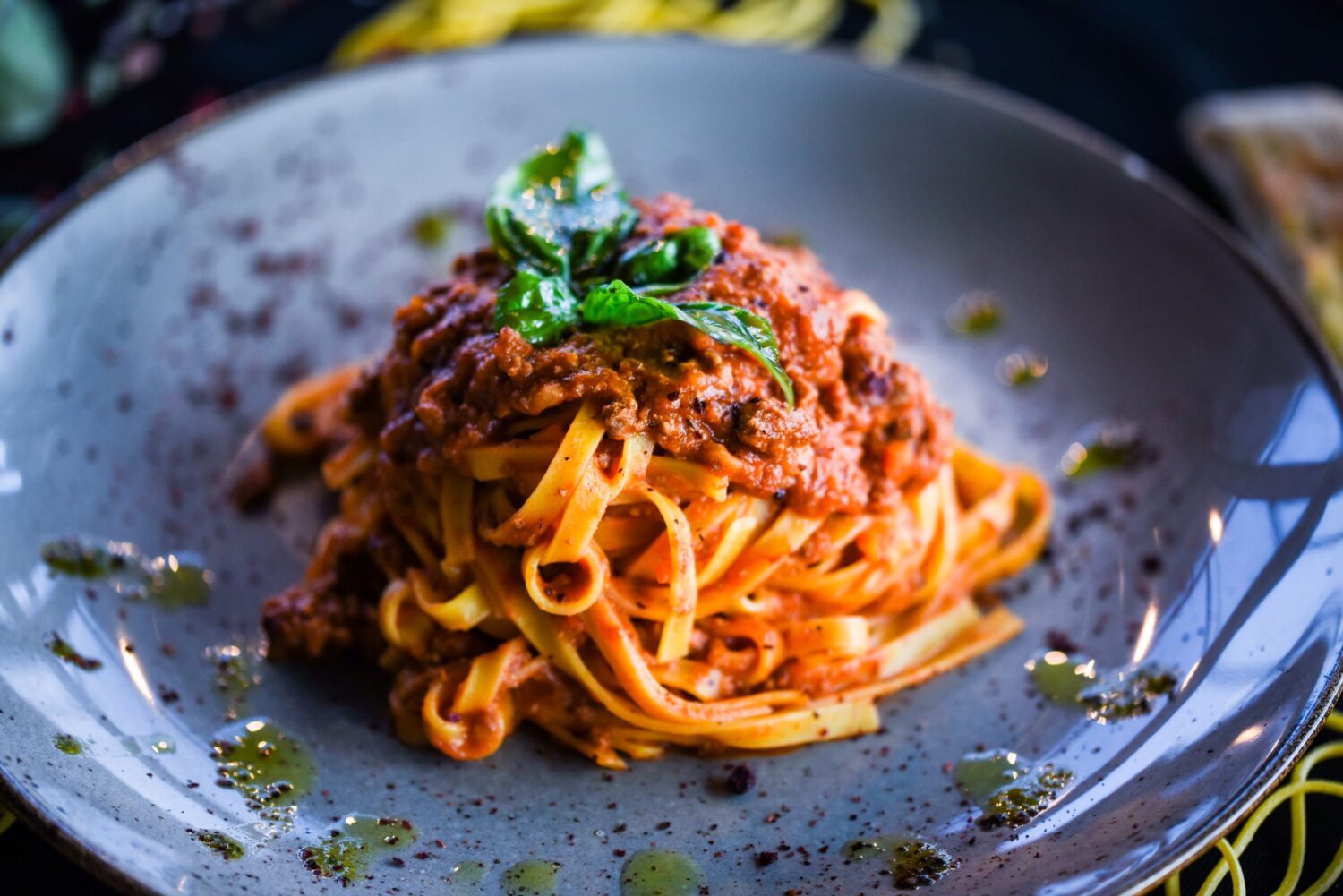Reading time: 9 minutes
All over the world, people sing the praises of one of the most versatile, not to mention delicious, foods ever created: pasta. In Italy, this first course and staple of the Mediterranean diet is taken to a whole other level. In this article, and in celebration of World Pasta Day, we will explore pasta’s origins, go on a regional culinary tour, and even share an authentic recipe!
The History of Pasta
For many years, the popular opinion was that pasta originated in China and was brought to Italy by Marco Polo in 1295. Now historians believe otherwise. In fact, it is much more likely that the Greeks and the Etruscans were already creating something similar to a lasagna noodle about 1,000 years before Christ. Laganon: a flat, unleavened sheet of pasta made of wheat flour and cooked in water was also recorded by Cicero and Horace in 100 B.C. In the first Roman cookbook, De re coquinaria written by Apicius in the first century AD, laganon is described as having a filling but probably didn’t resemble lasagna as we know it today. About a thousand years later, the Arab invasions of Sicily contributed itriyah, described as “threads of flour” and assimilated into the local dialect as tria.
By the 1600s, pasta was very widespread in many regions of Italy, and in Naples, became a staple food for the masses and was cheaper than bread and certainly, meat. It was around this time that the tomato was introduced to Italy, brought from the Americas to Europe by Spanish conquistadores. And as they say, the rest is culinary history.

Rules of Engagement
Anyone who has ever visited Italy is well aware that Italians are serious about food, are sticklers for tradition, and abide by certain “rules” especially when it comes to pasta. First of all, pasta is served on a daily basis in most homes all across Italy at lunchtime rather than dinner. Made of durum wheat flour, a plate of pasta provides about 10 grams of protein, around 300 calories (depending on the condiment), and about 20 grams of complex carbohydrates. A typical portion is between 80 to 100 grams and the classic condiment is a simple, wholesome tomato sauce with no frills.
There are hundreds of varieties of pasta shapes available on the market today ranging from classic spaghetti (there are actually six different types with slight variations in shape and size) to bowties to strozzapreti (literally translated, “choke the priests”). Italians almost innately know which type of sauce best suits a certain pasta shape. For example, penne rigate has striations in it allowing for the sauce to adhere to it better, but also, causing it to dry out faster. If you were making a baked pasta dish (pasta al forno), for example, you would want to use penne lisce, or smooth penne, because it will not dry out as quickly.

Quite possibly the most important rule when it comes to pasta in Italy is that it must be cooked to perfection in heavily salted water and under no circumstance overcooked! Italians would rather throw it out than eat it mushy. The proper consistency is the term known as al dente which literally means “to the tooth”. In other words, it should still feel firm and not lose its shape at all during the cooking process.
“To Each His Own”, Pasta That Is
What amazes many visitors when they come to Italy is that each region, and even province for that matter, truly does have its own specialty and tradition when it comes to pasta. Whether it is pastasciutta (dry pasta), pasta fresca (fresh pasta), pasta ripiena (filled pasta), pasta al forno (baked pasta), pasta all’uovo (egg pasta), you should make it your goal to try them all! Here is a whirlwind tour of some of the most popular pasta dishes for each of Italy’s twenty regions.


Northern Italy
- Aosta Valley: Very similar to Trentino’s spatzle, Chnéffléne is Aosta’s signature pasta dish typically served with a buttery chive sauce that dates back almost a thousand years.
- Trentino-South Tyrol: Spatzle are traditional in this northeastern Italian region that borders Austria. A hint of nutmeg is mixed into the flour, water, and egg dough forming little gnocchi-shaped balls and served with cream sauce and speck, a cured ham from the region.
- Friuli-Venezia Giulia: Cjalsons are a stuffed pasta similar to ravioli made with potato, flour, and egg and stuffed with a variety of fillings including apples and raisins.
- Lombardy: casoncelli is a stuffed pasta similar to ravioli and served with butter and sage sauce.
- Piedmont: Tajarin is a long, thin noodle served with Piedmont’s famous truffles.
- Veneto: Bigoli alle sardelle is a long, tube-shaped pasta topped with a light, sardine sauce famous in the Mantua area.
- Liguria: Trofie al pesto is topped with one of the most widely-known and used pasta sauces in the world, pesto. Made from fresh basil, pinenuts, olive oil, Parmigiano Reggiano, garlic, and salt, this sauce is delicious on just about anything!
- Emilia-Romagna: Tortellini in brodo is the famous egg-based pasta stuffed with a combination of pork and cheese cooked in a rich broth rather than topped with sauce. This dish is commonly served for Christmas in many regions of Italy.
Central Italy
- Molise: Cavatelli al sugo vedovo is a simple, hearty dish of cavatelli pasta and a tomato sauce made with lard in addition to olive oil.
- Abruzzo: Maccheroni alla chitarra con pallottine is an egg pasta topped with a hearty tomato sauce and tiny meatballs (SEE AUTHENTIC RECIPE BELOW)
- Umbria: Spaghetti alla Norcina hails from the province of Norcia and includes the famous black truffles harvested in the area.
- Lazio: Bucatini all’amatriciana is one of Italy’s most beloved dishes and is known all around the world. The key ingredient is guanciale or pork cheek along with fresh tomatoes, dry white wine, and topped with nothing else but pecorino romano cheese.
- Marches: Vincisgrassi is an egg-based pasta baked in the oven similar to lasagna. The tomato sauce includes a variety of meats to give it its rich flavor.
- Tuscany: Pici al ragù cinta senese is a long, tube-shaped pasta topped with a meat sauce made of Siena’s prized pork.
Southern Italy
- Calabria: Lagane e Ceci falls under the category of fresh pasta topped with chickpeas that have been sauteed in guanciale (pork cheek), tomato, onion, basil, and crushed red pepper.
- Basilicata: Strascinati ai broccoli is also a homemade, fresh pasta similar in shape to cavatelli and topped with sauteed broccoli florets.
- Puglia: Orecchiette alle cime di rape is considered a fresh pasta and takes its name from the Italian word for “ear” because of its shape. Topped with a delicious combination of broccoli rabe, anchovies, breadcrumbs, and garlic, this is Puglia’s most famous first course.
- Campania: Paccheri con pomodorini is a simple, yet tasty dish comprised of the large, tube-like pasta called paccheri and topped with cherry tomatoes, garlic, parsley, and crushed red pepper.
Sicily
- Pasta alla Norma: “short pasta” such as sedani topped with a sauce of tomatoes, eggplant, basil, and ricotta.
Sardinia
- Malloreddus: Similar to cavatelli pasta in shape and topped with a tomato base sauce with sausage, saffron, onion, basil, garlic and onion.
Pasta Myths and Faux Pas
Here are some widely believed myths about pasta that have been propagated across the globe, and some tips on how to keep it authentic and avoid embarrassment while dining in the Bel Paese.
- Myth: Spaghetti is always served with meatballs (only in certain regions)
- Myth: Lasagna is always made with ricotta cheese (only in certain regions)
- Myth: Fettuccine Alfredo is available in Italy
- Myth: Italians eat pasta for every meal
- Myth: Italians use spoons along with their fork to twirl their spaghetti
- Myth: Bread is always served with pasta
- Myth: Italians throw a spaghetti noodle against the wall to see if it is cooked
- Faux pas: NEVER overcook pasta
- Faux pas: NEVER break spaghetti or any other long noodle before cooking it
- Faux pas: NEVER serve pasta alongside another dish on the same plate
- Faux pas: NEVER put grated cheese on a seafood pasta dish
Fun Facts
Recipe for Maccheroni alla Chitarra from Abruzzo
Courtesy of Hotel and Restaurant Il Casale in Martinsicuro, Abruzzo
Maccheroni alla chitarra with ragù sauce
Course: MainCuisine: Italian6
servings1
hour1
hourIngredients
- For the pasta
700 g. flour
6 eggs
- For the ragù sauce
200 g. ground or minced pork
200 g. ground or minced beef
200 g. ground or minced lamb
3 liters of tomatoes (stewed, whole peeled, or sauce)
50 g. butter
1 cup (235 ml) of extra virgin olive oil
1 onion
1 carrot
grated Parmigiano Reggiano cheese
Directions
- For the pasta
- Arrange the flour in a mound on a large work space leaving a well in the center.
- Begin adding the eggs into the well and working the dough with your hands.
- Knead the dough for 35-40 minutes.
- Use a rolling pin to roll out a super thin sheet of dough.
- Cut the pastry into rectangles 60 cm long and approximately 20 cm wide.
- Place each rectangle onto the chitarra pasta cutter* (lengthwise) and press with a rolling pin to obtain the maccheroni.
- For the ragù
- Sautè the whole onion, carrot, and meat in the butter and olive oil and once browned, add in the tomatoes.
- Bring to a boil and reduce heat to a simmer.
- Cook for at least one hour.
- Add salt and pepper to taste.
- Boiling the maccheroni
- Bring a pot of salted water to a boil and carefully add the maccheroni.
- Once they come to the surface of the water (in just a couple of minutes or less), they are ready.
- Add cold water to stop the cooking process and strain immediately.
- Serve with ragù and lots of parmesan cheese.
Notes
- If you do not have the chitarra pasta-making tool, you can use a standard pasta maker and choose a long pasta shape such as fettuccine.
Check out these articles about Italian food and drinks.



